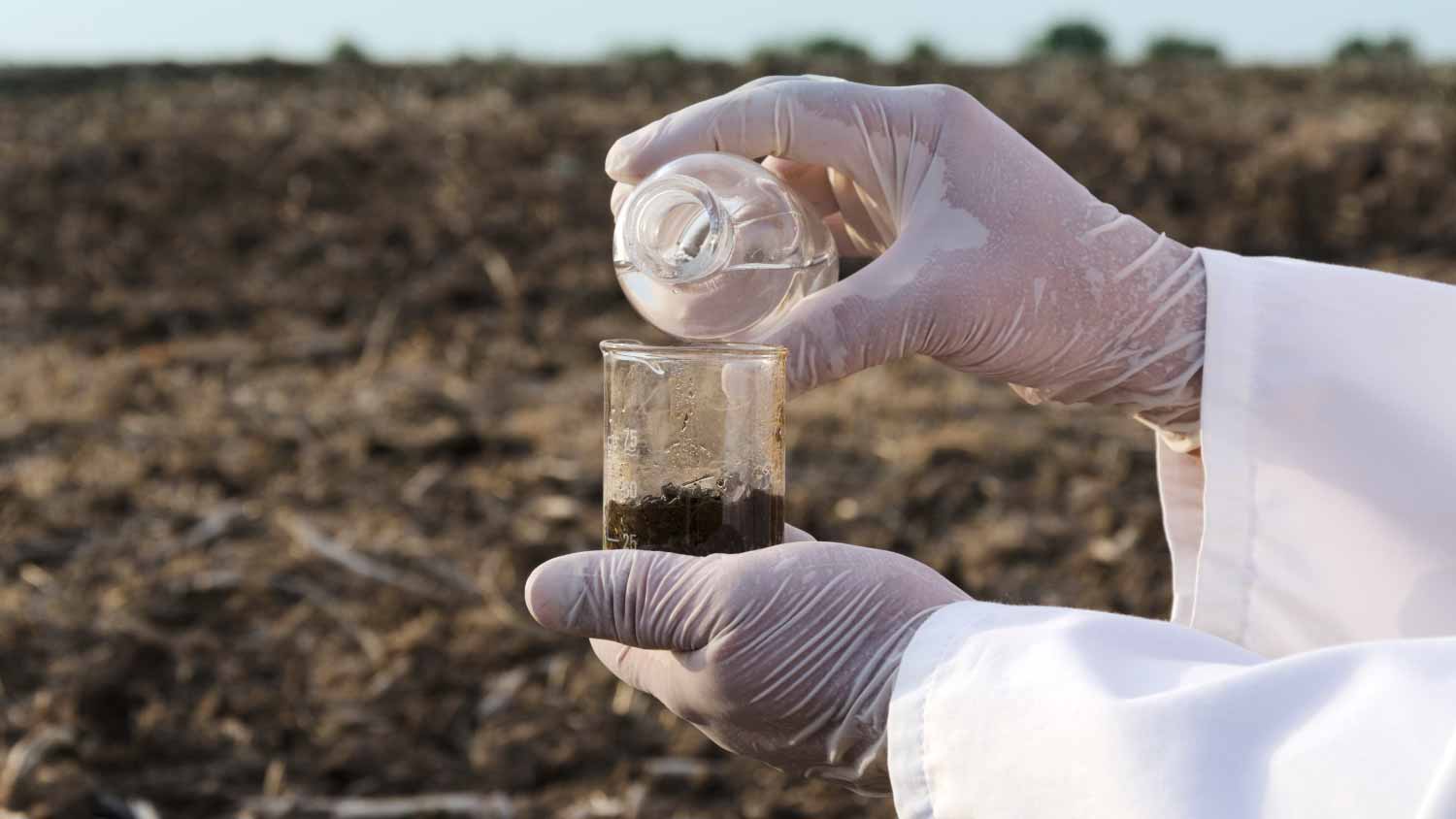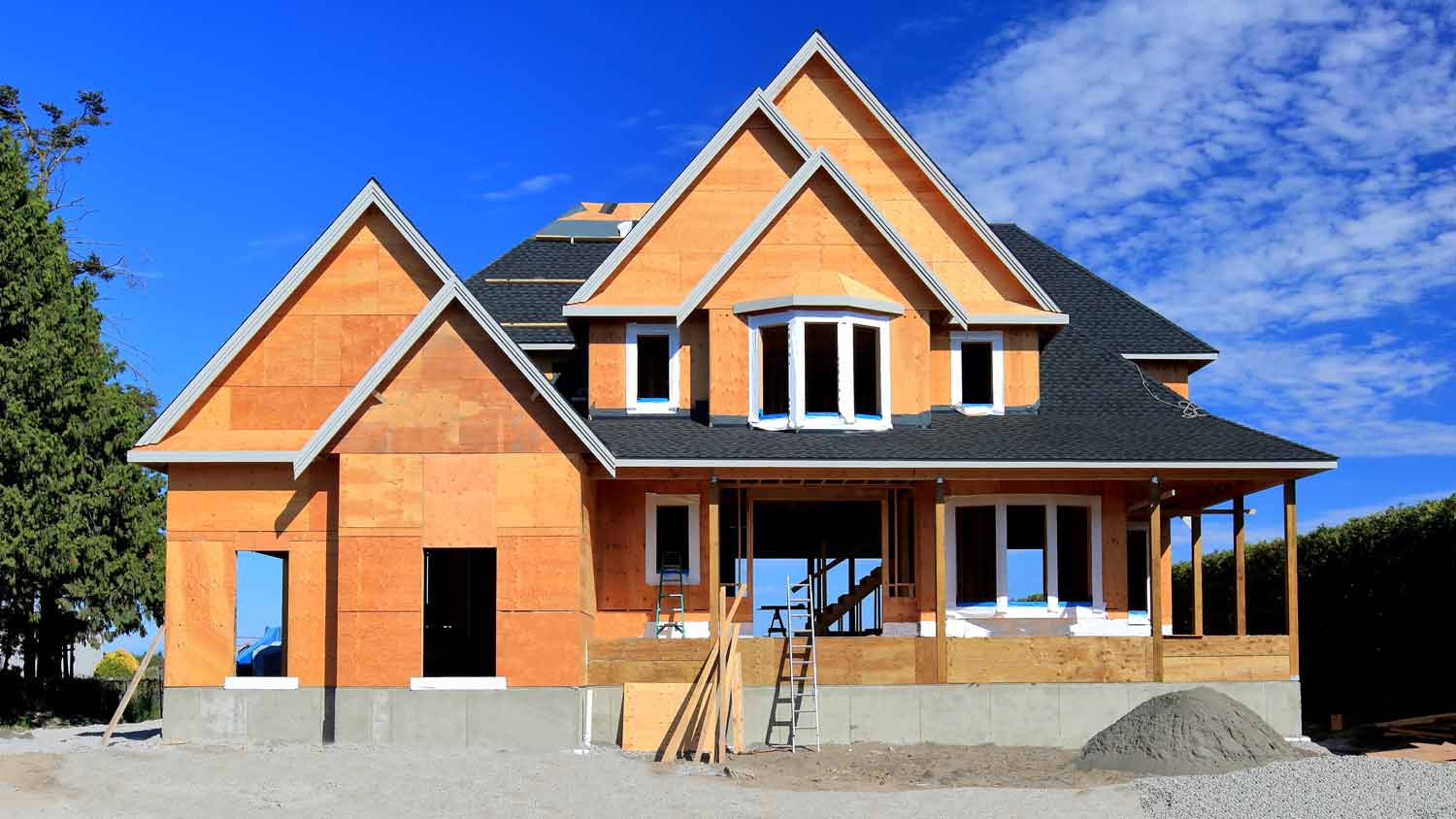
Looking to turn your yard into a hockey or ice skating paradise this winter? Use this backyard ice rink cost guide to see what the installation will total.
Don’t soil your project plans by ordering the wrong test


A soil test tells you about the quality of your soil, including information about consistency, contaminants, and nutrients.
A perc test tells you how well your soil drains and is a necessary step before installing or making changes to a septic or drainage system.
Soil tests are more helpful in getting information that can help grow healthy grass and plants, while perc tests are required by law for building projects.
There are many reasons you may want or need to test different things in the soil on your property, and there’s no single test that will cover all of them. Understanding the differences between a soil test and a perc test is a good first step to ensure you’re ordering the right test and avoid needlessly paying for tests you don’t need.
A soil test gives you information about the quality of your soil, and the specific information you get depends on the type of test. Different tests can check for nutrient levels, soil consistency, contaminants like home heating oil and pesticides, pH, availability of organic matter, and more. A perc test tells you just one thing: how efficiently the soil on your property can drain water.
Soil testing is a blanket term for a variety of different tests. Some check your soil for just a single metric, like pH, while others can tell you multiple things, like pH, contaminant levels, nutrient levels, and suitability for planting or seeding.
| Pros | Cons |
|---|---|
| More affordable | Won’t lead to permits |
| DIYable | Legally unnecessary |
| Fail is less serious |
Best for:
Checking to see if your soil is contaminated.
Determining your soil health and what amendments you need.
Creating suitable conditions for plants, trees, or grass.
Soil tests tell you more information than perc tests, which only confirm how well your soil drains water. You can order soil tests to test for a single metric, or you can choose a complete soil test that tells you everything you might need to know about soil health and what amendments you might need for healthy landscaping.
Soil tests are usually much less expensive than perc tests because they don’t require heavy machinery to dig holes, nor do they require a licensed professional to be on-site to assess the results and declare a pass or fail. You certainly can hire an expert who does soil testing, but the work is also relatively easy to DIY.
It's important to ensure you have the right soil before starting your project. Hire a soil or geotechnical engineer to perform testing on your soil to make sure it's suitable for your construction.
The only real downside of a soil test is that it won’t help you get permits for larger projects. If you’re installing a new septic system, making changes to an existing one, making changes to drainage on your property, or regrading your land, a soil test won’t provide any helpful information like a perc test would.
Unless you suspect that an underground oil tank on your property is leaking, you likely don’t need a soil test, as helpful as it can be for getting your ground into the best condition possible.
A perc test measures how efficiently your soil drains water, so it’s much more limited in scope than a soil test. However, passing a perc test will often mean you can legally move forward with your larger project, whether that’s installing a septic system or a drainage system or regrading your property. It’s a more involved test that demands digging a large hole or trench on your land, filling it with water, and timing how long it takes to drain.
| Pros | Cons |
|---|---|
| Can lead to permits | Fail is serious |
| Often a necessity | More expensive |
| Not DIYable |
Best for:
Determining if your property is suitable for certain projects, like installing septic or drainage systems.
Homeowners who are building new construction, especially in rural areas that aren’t connected to municipal sewer lines.
The biggest upside of conducting a perc test on your property is that, if you pass, you’ll get formal approval to carry out the larger project you have planned, whether that’s changing the grade of your property or making changes to septic or drainage systems.
Perc tests are often a legal requirement before building, especially if your home will include a septic system. The fact that they’re required by law in most municipalities also means that they help avoid groundwater contamination from sewage, which is beneficial both to the environment and all homeowners in the area.
Perc tests are much more involved and often require heavy machinery and hours of time from a local soil tester that is licensed. Not only do they take longer to conduct, but they’re also much more expensive in most cases.
Many soil tests are DIYable, and you can even buy soil testing kits online for testing different metrics, like pH and nutrient levels. You can DIY a perc test if you want, but it likely won’t do much for you, as most municipalities require that a professional carry out the test in order to get approval for your project.
Lastly, failing a perc test comes with more serious consequences, including an inability to build on your land without making extensive and costly changes.

There are a few key areas where soil tests and perc tests differ, and considering these can help you decide which is right for you.
Soil tests can tell you more information—including nutrient levels, oxygen levels, contaminants, pH, and more—while perc tests only tell you how quickly your soil drains. While soil tests provide more information, perc tests provide more crucial information necessary for getting building permits in many cases.
Soil tests cost an average of around $1,400, but you can get DIY test kits for as little as $40 each. A perc test costs around $1,300, on average, but prices will rarely drop below $300 and could go as high as $3,000 for larger properties. In many cases, soil tests will be less expensive, especially if you go the DIY route.
You can buy soil test kits online for under $100 in many cases, depending on what you’re looking to test in your soil. You can also do a DIY perc test, but you won’t get anything out of it, as most municipalities require that a professional who does perc tests carry out the test in order for the results to be legitimate.
“Failing” a soil test usually means that your soil isn’t ideal for growing grass or plants, and you can then make soil amendments to improve the quality. Failing a perc test means you won’t be able to build on your land without making very expensive changes to the drainage. Overall, failing a perc test is a much bigger deal.
The best time to do a perc test is in the summer when the water table is the lowest. For the best results, you should plan around precipitation. The best time to do a soil test is in the fall, but your results won’t vary quite as much at other times of the year as they would with a perc test.
From average costs to expert advice, get all the answers you need to get your job done.

Looking to turn your yard into a hockey or ice skating paradise this winter? Use this backyard ice rink cost guide to see what the installation will total.

When your home project requires a professional at the helm, how much are construction management fees, and how do they determine their rate? Let's break it down.

Installing a dumbwaiter can save you time and energy. Learn how much a dumbwaiter costs with this guide.

Worried about charging too much—or too little—as a general contractor? Learn what factors go into markup, how to calculate it, and how to communicate pricing to customers.

To create a comfortable indoor environment, learn how to soundproof a ceiling. We’ll break down the different ways to get it done.

What is included in framing a house? This process involves framing the floors, walls, and roof. Contractors must follow a detailed building plan for success.